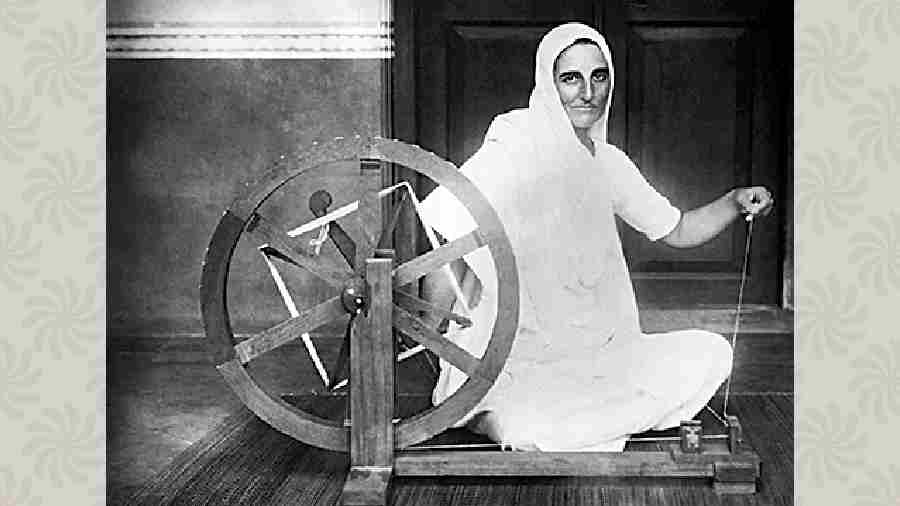Book: Rebels against the Raj: Western fighters for India’s freedom
Author: Ramachandra Guha
Publisher: Allen Lane
Price: 799
Ramachandra Guha’s latest opus focuses on seven women and men from the West who advocated for anticolonial causes, such as India’s freedom from British occupation. Focusing on activists who were engaged in India’s politics from the 1890s to the 1980s, Guha explains that the cause of India’s freedom was shared by a range of political activists who saw freedom, self-determination, and sovereignty as principles that should apply to Indians as well as to those who were in the West. Through a set of accounts about an extraordinary group of individuals who resisted cultural norms and expectations to live up to higher ideals, Guha demonstrates how the cause of Indian Independence resonated with those who became activist-allies to Indians advocating for Independence. Each of these biographical stories is beautifully rendered, showing how friendship and hospitality shaped the anticolonial Left in India.
Guha is well known as a public intellectual and historian who has narrated the history of modern India to a wide audience. In a trilogy of books (Gandhi Before India, Gandhi: The Years That Changed The World, India After Gandhi), Guha explained the ideas and the strategies that enabled India to gain independence in 1947 and how India has fared as the world’s largest democracy. Those three books rested on the centrality of Gandhi, who can be characterized as one of the most important thinkers and political activists in the history of modern India. Not surprisingly, two-thirds of this book draw from Gandhi’s correspondence and engagements with most of the figures featured in it. The chapters which focus (in chronological order) on Annie Besant, B.G. Horniman, Samuel Stokes, Madeleine Slade, Philip Spratt, Dick Keithahn, and Catherine Mary Heilemann show how Westerners became enamoured with Gandhi’s programme of non-violence and ascetic living. India gave these women and men a higher purpose. Of the group, Annie Besant proved to be resistant to Gandhian living; she comes off as a rival to Gandhi, sometimes serving as a moderate to his militant demands and, occasionally, siding with him in his vision of Indian liberation. Another well-known figure, Madeleine Slade — aka Mira Behn or Mirabai — came to work with Gandhi and stayed, establishing her own ashram in the Himalayas. The lesser-known figures include Catherine Mary Heilemann, who adopted the name, Sarala Devi, and became active in girls’ education and, later, in environmental causes. B.G. Horniman and Philip Spratt were both journalists and writers; Spratt was a communist who was charged in the Meerut Conspiracy and eventually ended up settling with an Indian woman in southern India. Samuel Stokes and Dick Keithahn came to India as missionaries but found their spiritual commitments transformed. Stokes converted to Hinduism under the auspices of the Arya Samaj while Keithahn became an Indian citizen who was deeply engaged in extending the ideas of asceticism, self-sufficiency, and education to local communities around Tamil Nadu.
The best part of the book comes at the end: after Independence, several of these figures stayed on in India, remaining politically active even though colonialism had ended. Strikingly, environmental concerns emerged as a central anxiety for Mira Behn and Sarala Devi as India developed its industries quite quickly. They attempted to extend Gandhi’s emphasis on self-sufficiency and direct these strategies towards sustainability, a buzzword they didn’t use but clearly anticipated. For Guha, who began his career as an environmental historian, these passages show how ideas about environmental justice were central to the ambitions articulated by the larger circle of Gandhian thinkers. Before they died, Sarala Devi corresponded with Dick Keithahn; Miraben moved to Austria and worked with the filmmaker, Richard Attenborough, as he wrote the Oscar-winning film, Gandhi. For the Westerners who lived past 1947, they chose to remain in India rather than return ‘home’.
The seven rebels accommodate themselves to India, sensitive to their position as outsiders. In modern parlance, they were allies. Their idealism and their willingness to be jailed for their beliefs render them extraordinary; all seven of these figures suffered detention in British jails and several of them were deported from India on the grounds that they were political threats to the colonial order. As Guha notes, they show an admirable openness to India, and their Indian friends and counterparts showed an enormous amount of generosity in welcoming them to this country. Even though we know (with the benefit of hindsight) that most Westerners maintained deep commitments to racial superiority and class hierarchy while in India, the rebels of Guha’s book were not just rebels against the raj, they were also rebels against their homelands.











